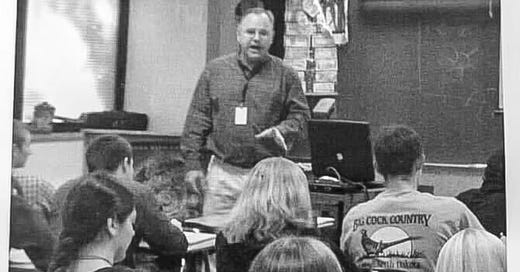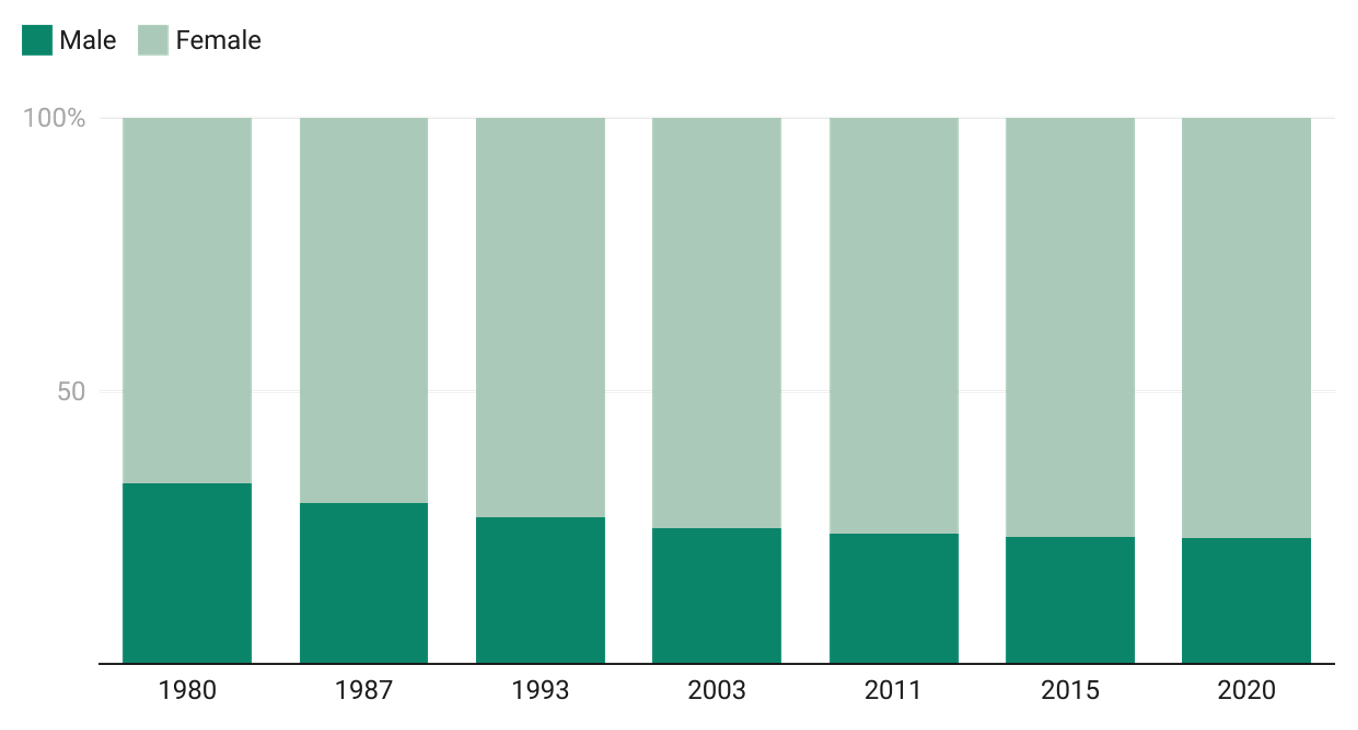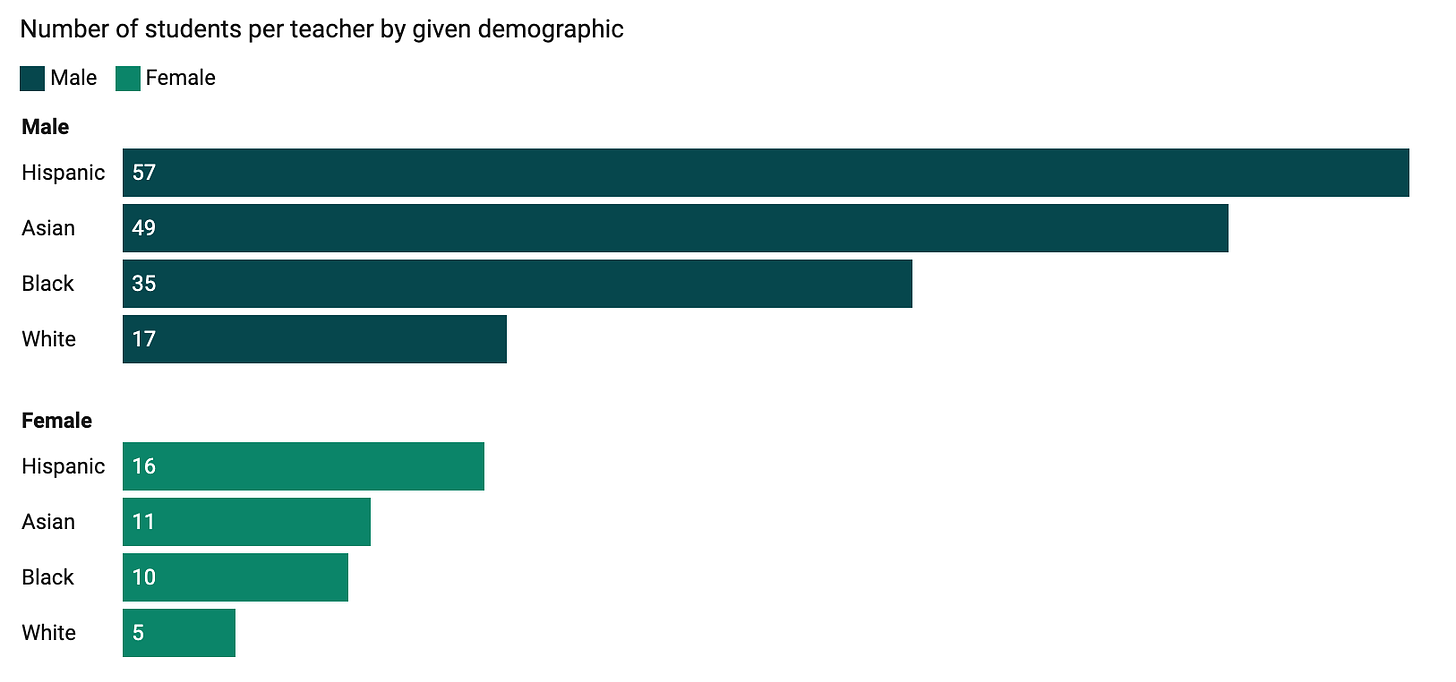Gov. Tim Walz was a public school teacher, a fact that is getting plenty of attention since he was tapped by Kamala Harris to be her running mate. Some of his former students traveled to see him accept the role: Sam Hurd, 35, was taught history by Mr. Walz at Mankato West High School and went on to be a teacher himself. Hurd said:
He cared more that you showed up and took part in the discussion. He brought a lot of the C and D students validation that they mattered. He showed them that adults want to hear them and care. He would say, ‘I want to know what you think.’
Hurd was excited that now “people get to see what we see.”
I hope that Walz’s pick helps draw attention to the importance of public school teachers, who are undervalued in contemporary society. (In 2014, public opinion on teaching passed an ominous milestone when for the first time ever, a majority of parents answered “No” to the following survey question, “Would you like your child to become a public school teacher?” 54%, up from just 28% in 2009).
But I also hope that it draws attention to a problem that is not getting anything like enough attention: the declining share of men in the classroom.
Back in the 1980s, when Mr Walz started his career in education, one in three K-12 teachers were male. Now that share is 23%, and falling:
This is bad news.
It is bad news for the profession, which is trying to tackle shortages with only half the labor force.
It is bad news for men, who are missing out on career opportunities in education.
And it is bad news for boys, who are less and less likely to have male role models in the classroom.
The real danger here is that the very idea of education gets increasingly coded as female; which is every bit as bad as if it was the other way round.
Below the “tipping point”
The difference between 33% and 23% is not just 10 percentage points. It may well be the difference between a career that is seen as belonging largely to one gender.
Work from Jessica Pan and others shows that there is a “gender tipping point” in occupational composition, somewhere in the region of 30% representation. The precise mechanisms and levels are hard to assess, but the broad point is clear: it is harder to enter a profession where you will be in a clear minority.
So, arresting and hopefully reversing the decline in the share of male teachers is an urgent policy priority. The lower the male share gets, the harder it will be to attract men to the profession, just as it is harder to attract women into male-dominated occupations.
Black and Hispanic men missing
We’ve done some research on the falling share of male teachers over at AIBM. One of the most striking findings is the under-representation of male teachers of color. White girls and boys represent about a quarter of students each, while more than half of all teachers (56%) are white women and 17% are white men. By contrast, over a quarter (26%) of all students are boys of color; but just 6% of teachers are men of color.
Action needed
There are some initiatives to try and tackle this problem, but they are few and far between. For example:
In Texas, Dallas ISD has a residency program for Black and Latino men to work as adjunct teachers in a classroom.
Likewise, in New York City the NYC Men Teach program, launched in 2015, met and surpassed its goal of adding 1,000 men of color into the teaching pipeline.
“Call me MISTER” is a teacher leadership program founded at Clemson University and now operating across South Carolina and the nation, working to increase the number of men from diverse backgrounds in the teaching profession.
Several other organizations support male educators of color, including Bowie State University’s Center for Research & Mentoring of Black Male Students & Teachers, Profound Gentlemen, Real Men Teach and Urban Ed Academy.
We now need a national movement to get more men into teaching, supported by policy at the school, district, state and federal levels.
I’d love your ideas on this front; and I’d love for you to join this effort.







Having taught in both elementary and university settings, I whole-heartedly agree that teaching is a critical area for men to serve in society. Speaking in generalizations, I think one of the elements that keeps men from pursuing this career is a sense that there is little mobility in the profession. The only way "up" is into administration, which is a) a very different career often requiring considerably more education and b) difficult to get into as the number of those roles is far fewer. Part of an answer would be to re-structure educational administration so it is more of a shared governance model. That is, allow teachers (men and women, of course) to serve in administrative positions for a term - 5 years? 4 years with a possible renewal for a total of 8? - and then return to the classroom. That would allow senior teachers to have some flexibility without having to abandon the classroom forever. It would provide more in the education profession the chance to exercise leadership gifts and gain perspective on those roles. It would "seed" every school with people who have served in administrative leadership once they're back in their teaching positions. It would allow everyone (but I do think this is particularly important for men) to see the teaching profession as not just a permanent classroom assignment for 30+ years, but a career with mobility, flexibility, new challenges, and change over the course of time. I would argue that even more than the pay (though that isn't inconsequential) the perception that teaching lacks growth potential is a deterrent for many men.
Honestly I think the salaries are the biggest thing. Right or wrong, I suspect most guys who have the ability to go to college and get white collar-type jobs still want to support — or at least substantially contribute to the income of — their households. They may or may not know the gender ratios in teaching, but they surely know that they could make more money in almost any field. Meanwhile salaries in education seem like they are designed as secondary incomes (ie you have a spouse making more money, so you have the freedom to pursue something low paying).